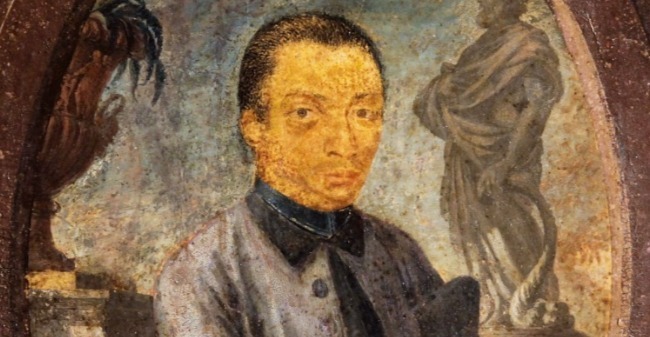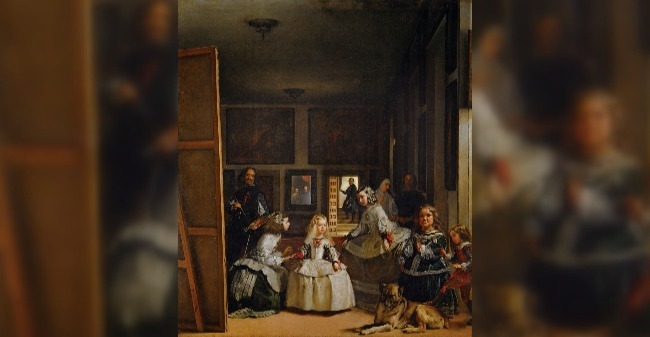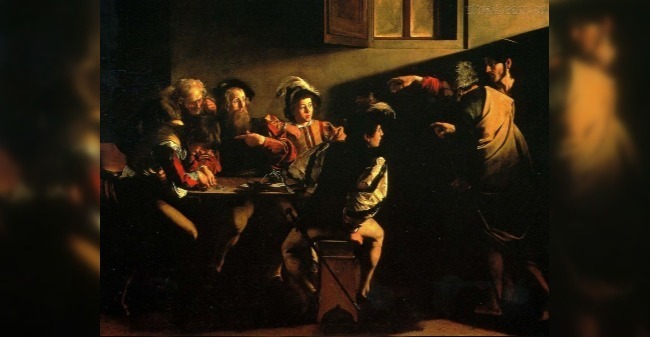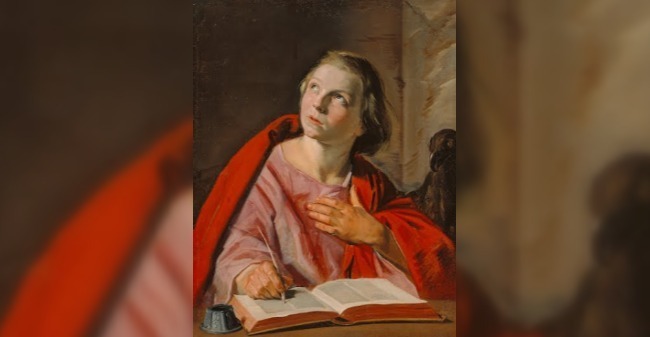Baroque is an artistic style that emerged in the 16th century and lasted until the beginning of the 18th century, characterized by having an aesthetic with an excess of ornaments and representations of the divine.
The Baroque style is marked by refinement, refinement and exaggeration of adornments. This movement arose with the mission of rescue theocentric ideas and contain the Protestant Reformation of Martin Luther. In this way, it acted as a tool of Counter-Reformation.

Born from a free interpretation of classical forms, the style represented an opposition to the rationalism of the Renaissance, which excelled in harmony and simplicity. In other words, it operated at a time marked by duality: medieval theocentrism and Renaissance anthropocentrism.
The influence of the Baroque movement started from painting, but also reached architecture, sculpture, music and literature, where it had a special importance in the development of the arts in Brazil.
Among the main names in European baroque, the Dutch Rembrandt, the Spaniard Diego Velásquez, and the Italian Caravaggio stand out.
Seventeenth-century dictionaries began to use the term baroque as an adjective to describe what was "irregular" or "expensive". Initially, this was considered a pejorative meaning.
Learn more about Rebirth.
Historical context: how did the baroque style come about?
With the Protestant Reformation of Martin Luther, in the middle of the 16th century, the Catholic Church began to lose many faithful, especially among members of a new class that was on the rise at the time: the bourgeoisie.
As a way to reinforce Catholic teachings, the Company of Jesus (1534), the baroque style being a result of this need of the Catholic Church to propagate the principles of religion.
In this way, baroque expanded as a religious art, with the construction of gigantic cathedrals, churches and chapels. In the plastic arts, the emphasis was on sculptures and paintings of saints and biblical episodes.
With the passage of time, however, the elaborate style, rich in ornamental details, which was initially applied in churches, is now also used in palaces. In fact, many of the old buildings that are now part of the world heritage are from the Baroque period, especially in Portugal and Brazil.
During the 18th century, the movement underwent several adaptations. One of them was the Rococo style in France, so named because of the ornate spiral-shaped column capital and shell designs that were often employed.
Baroque in Brazil
It was the first artistic movement with expression in the country, still in the colonial period, under the influence of the Portuguese Jesuits. In other words, Brazilian baroque is directly related to Portuguese.
Initially, baroque art in Brazil was used by the Jesuits as a tool in the catechizing process. Later, however, it came to be seen as a "reminder" of the power and importance of God's word.
The artistic production of Brazilian baroque has its first representations in the 17th century, with the discovery of the mines of gold and precious stones, and the rapid enrichment of some layers of the population.
It developed in the captaincy of Minas Gerais, with the discovery of deposits of gold and diamonds, and also in the Northeast, which accumulated wealth from the period of sugarcane exploration.
In these regions are the greatest works of Brazilian Baroque art, such as the churches in Salvador, or in Ouro Preto and Mariana, with Aleijadinho's sculptures marking the style's influence in the country.
Top artists with prominence in Brazil
The main names in the baroque style in Brazil were:
Gregório de Matos Guerra (1636 - 1696)

It is considered the first Brazilian poet (born in Brazil) and one of the main names in national baroque literature.
He was known as "Mouth of Hell" due to the satirical and "inappropriate" content of his texts, which he used to criticize Bahian society, the government and even the Catholic Church itself. In addition to satires, Gregório de Matos also wrote religious, lyrical and erotic poems.
Father Antônio Vieira (1608 - 1697)

He was a Portuguese missionary who defended the rights of indigenous peoples, Jews and slaves throughout his life. Even though he was born in Portugal, Antônio Vieira lived for many years in Brazil, consolidating his work there.
the Sermons by Antônio Vieira are considered one of the most emblematic works of Brazilian and Portuguese Baroque literature.
Antônio Francisco Lisboa, the "Aleijadinho" (1730 - 1814)

With a degenerative disease, Aleijadinho did not let physical limitations prevent him from continuing to produce his work.
This sculptor is considered one of the main names in the baroque style in Brazil, even though his works also have characteristics of other genres, such as classical and Gothic.
The artist's main works were made in wood carving, sculptures, reliefs and architectural projects for the facades of churches, such as the St. Francis Church, in São João del-Rei (MG).
Bahian Baroque
Bahia was the stage for the first manifestations of the Baroque style in Brazil, mainly because it was the economic, political, cultural and commercial center of the country at that time. It is worth remembering that Brazil was still a colony of Portugal at that time, and Salvador was the capital.
THE St. Francis Church (see image below) it can be considered one of the richest expressions of Bahian baroque. Its interior is filled with sophisticated details made in gold and rosewood.
One of the main representatives of this phase of the national baroque was the poet Gregório de Matos Guerra, also known as "Boca do Inferno", due to the controversial and satirical content of his texts.

Minas baroque
Due to the large amount of gold and precious stones existing in the cities of Minas Gerais, especially Ouro Preto, this is one of the regions with the greatest Baroque representation in the country. The style that stands out in this period is the Rococo, which for many scholars can be considered an independent school.
Numerous architectural constructions influenced by the Baroque style are present not only in Ouro Preto, but also in São João Del Rei and Mariana.
Among the main representatives of the Minas Gerais baroque, which had its heyday during the "Golden Century" (18th century), highlighted by Antônio Francisco Lisboa, the "Aleijadinho", Manuel da Costa Ataíde (1762 - 1830), and Valentim da Fonseca e Silva (1745 - 1813).
Baroque Characteristics
- The dualism in the works showed a harrowing struggle between opposing forces: good and evil, God and the Devil, Paganism and Christianity;
- Emotion overrode reason;
- Primacy of decorative effects to arouse the emotion of those who look at the works, through curves and twisted columns;
- Contrast between light and shadow to express feelings and accentuate depth, both in painting and in architecture;
- Dramatic intensity;
- Aesthetic enhancement (how it was conveyed was more important than the message itself);
- Resumption of ideas from theocentrism;
- Response to the Protestant Reformation.
Learn more about Baroque Characteristics.
baroque art
The Baroque style influenced the various aspects of art, such as music, literature, architecture, plastic arts, etc. However, among the fields in which it had greater representation, as well as in architecture, painting and literature stand out.
baroque painting
The central themes of the Baroque works are scenes from passages from the Bible, the history of Humanity and mythological aspects. It was common for Baroque artists to portray their work on the walls and ceilings of churches or palaces. The daily life of the bourgeoisie and the nobility were also commonplace scenes in the paintings.
Characteristics of baroque painting
In summary, the main features of Baroque paintings are:
- Use of depth illusion techniques;
- Contract between shadow and light;
- Wealth of details;
- Dramatism and dark aspect.
Authors and works

- Author: Diego Velázquez (1599 - 1660)
- Constructions: The Girls (1656)

- Author: Rembrandt (1606 - 1669)
- Constructions: The Night Watch (1642)

- Author: Caravaggio (1571 - 1610)
- Constructions: The Vocation of St. Matthew (1600)

- Author: Antoon van Dyck (1599 - 1641)
- Constructions: Samson and Delilah (1628 – 1630)

- Author: Frans Hals (1580 - 1666)
- Constructions: St. John the Evangelist (1625)
Baroque in Literature
In literature, Baroque consisted of a literary current marked by the virtuosity of language and refinement of words. It is marked by an elaborate syntax, with wordplay and the usual use of hyperbaptism.
The main characteristic of literary baroque is the use of antitheses, metaphors and paradoxes in poetry. They were resources used to express the feeling in exaggerated verses, where the form was better crafted than the content itself., with great use of hyperbole.
One of the most discussed feelings is disillusionment, and the baroque poet seeks to describe the states of soul through aesthetic games. The Baroque text is pessimistic, with an elaborate and often somber language, with a strong religious stamp.
The instability of life and the constant presence of death marked the baroque in literature, where everything is ephemeral and fleeting. Suffering was the consequence of sins committed, and repentance also appeared as a frequent theme.
Characteristics of Baroque in Literature
In summary, the main features of Baroque literature are:
- Use of figures of speech (antithesis, paradoxes, hyperbole and hyperbato);
- Far-fetched, erudite and ornate language;
- Pessimism;
- Opposition between theocentrism (God) and anthropocentrism (Man);
- Main aesthetic aspects: cultism and conceptism;
- Texts with a strong religious nature.
Cultism and Conceptism
These are the two aesthetic aspects that predominated in Baroque literary works:
| Cultism | conceptism |
|---|---|
| very far-fetched vocabulary | Frequent use of paradoxes |
| Highlight given to word play | Elaborate design (logical reasoning) |
| complex metaphors | Ideas / Concepts Game |
| Main author: Gregory of Matos | Main author: Father Antônio Vieira |
Baroque and Arcadianism
The opposition to the Baroque (in literary terms) came with Arcadism, still in the colonial period, and later by Romanticism, already strongly influenced by urbanization in Brazil.
While Baroque is characterized by a high level of complexity, Arcadianism is the opposite, being defined by a simplicity and the appreciation of the bucolic daily life. Arcadism aimed to revive the classical ideal, achieving harmony and formal balance.
It also had as its greatest exponent the Minas Gerais school, precisely in Vila Rica (a city that is now called Ouro Preto), under the leadership of poets Cláudio Manuel da Costa and Tomás Antônio Gonzaga.
Learn more about Arcadianism.

